Review: Pantech Matrix Pro
Mar 6, 2009, 5:15 PM by Eric M. Zeman
Pantech updates the Duo and calls it the Matrix Pro. This dual-slider touts Windows Mobile, a full QWERTY and 3G. Find out where it excels and where it falls short in Phone Scoop's full review.
Form
Is It Your Type?
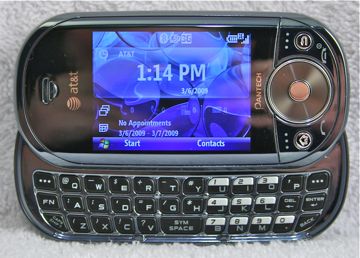
If Windows Mobile is your thing and you're not the touch-screen type, the Matrix Pro from Pantech — an update of the Duo — may be what you're looking for. It offers dual-slide action complete with QWERTY keyboard and standard dialpad. All is not rosy, though. Some major weaknesses threaten the Matrix Pro's power.
Body
The Matrix Pro more closely resembles the Ocean 2 (also made by Pantech) than it does the Pantech Duo, which is the spiritual predecessor of the Matrix Pro. It has the soap-bar shape of the O2, but thankfully comes with a somewhat smaller footprint. It is shorter and narrower than the O2, but it is thicker. In fact, it measures nearly an inch thick. That's fat. It's also a bit on the heavy side. Combining the fatness and weight, and you have a serious anchor weighing you down.
Despite its bulk, the Matrix Pro feels good in the hand. Its curved edges are comfortable and smooth to grip. The upward sliding mechanism (to reveal the numeric keypad) feels great. There's a nice amount of spring assistance and it jumps open smartly and feels solid. The sideways sliding mechanism doesn't have quite the same quality feeling to it. There's a minimal amount of spring assistance, and it feels a bit rough. Also, when open sideways, the top part of the slider is loose. There's a lot of side-to-side play that degrades from the quality of the phone.
The controls on the front face of the phone are squished uncomfortably down at the bottom. They're so squished, that I found myself opening the phone in order to make it more comfortable to use. The D-pad almost touches the very bottom edge of the phone, and reaching it while the phone is closed can leave the phone unbalanced in your hand. The D-pad is about the size of a quarter and has a good edge to it. The action is OK. Packed around the D-pad are six other buttons. The soft keys and send/end keys are built into the surface of the Matrix Pro. The two soft keys are easy enough to find and use, but I thought the send/end keys were too tightly mashed below the D-pad. The home and back keys are circular buttons that stand out starkly compared to the surrounding controls. These two buttons have excellent travel and feedback.
The volume toggle and voice record key are found on the left side of the Matrix Pro. These buttons are practically perfect. They are easy to find and have great travel and feedback. The camera key on the right side of the phone works just as well as the others. Also on the right side is the hatch covering the data/charging port. This hatch is a total pain to use. It refuses to open all the way unless you really work at it. What's worse is you know you'll be using this hatch all the time (probably daily) to charge the phone. Conversely, the hatch protecting the microSD slot on the bottom of the phone nearly pops open easily.
As for the QWERTY keyboard and number pads, they are acceptable. The QWERTY has three rows, which means is doesn't quite have a standard layout. The space bar is inserted between the V and B keys. Rather than place the number keys along the top row, the Matrix Pro packs them on the right side of the keyboard, shared with the UIO, JKL and BNM keys. The keys have good travel and feedback, but it is impossible to tell where you thumbs are on the keyboard without looking. There are no physical indicators to tell you which row or column your thumb is hovering over.
The numerical keypad is perfectly flat. The keys
are well spaced and have good travel and feedback, but it is a little hard to tell what you're pressing without looking at the keypad.
The Three S's
Screen
The Matrix Pro's screen is a reasonable size. It's not the largest screen we've seen on a Windows Mobile phone, nor is it the smallest. It is bright enough to be read in indoor environments, though it is nearly unreadable outside. It did OK on a cloudy day, but direct sunlight washed it right out. Colors look good, but images and icons didn't look as razor sharp as we'd like them to be. There was a softness to the images shown on the screen that made them look just slightly out of focus.
Signal
The Matrix Pro did a fine job of collecting AT&T signal. It had full strength pretty much everywhere I took it around the metro NYC area, including the NJ vault. I never missed any calls due to signal issues and the Matrix Pro didn't drop any calls while I was testing it. I did notice some moments when it failed to connect to AT&T's data network, however, and had several "cannot connect" error messages and time-outs when trying to launch the browser. This error message happened in several different places that I tested the Matrix Pro.
Sound
Calls sound quite good on the Matrix Pro. With the volume set to about 60%, callers were easy to hear through the earpiece even in noisy environments. If you turn it up all the way, city streets, coffee shops and even some bars won't prevent you from hearing your callers. I noticed a few small crackles during several of the calls I made with the Matrix Pro, but most were crystal clear. The ringer, on the other hand, was not so good. In fact, it was easy to miss calls when out in the world even with the ringer set to the max. It's just not loud enough. Vibrate strength was decent. Set to vibrate you won't miss calls if the phone is on your person.
Battery
Battery life was decent. With heavy use, I still managed to get about two days out of the Matrix Pro. That included massive amounts of browsing via 3G, Twittering, listening to music and making calls. If you're the constantly-connected type, I'd bring a travel charger with you if you're going away for even one night. Just in case.
Basics
Menus
The Matrix Pro uses Windows Mobile 6.1, and brings nothing new to the mobile operating system. It has the same Today screen that uses the up-and-down and left-right scrolling through the phone's features (such as left-right scrolling through your varying email accounts from a single "email" line) without pulling up the Start menu.
Aside from the quick access that this home page gives you to your calls, messages, photos and settings, you have to use the Start menu to get at the rest of the applications buried in WinMo.
The Matrix Pro's Start menu doesn't appear to be customizable at all. Rather than offer a list of applications along the left side of the screen, the Start button simply opens the main menu page of the Matrix Pro. This menu is arranged in a grid configuration, and also doesn't appear to be customizable.
Calls/Contacts
You can access your contact list from the right soft menu on the Today home screen. But you don't need to pull up and scroll through this menu and scroll through you contacts to find who you're looking for, or even navigate your speed dial options. You can just start typing the name of your contact on the Today home screen and the corresponding contacts are displayed.
You can make calls or send messages from within each contact. Of course, because the Matrix Pro has an actual dialpad, you can dial numbers and set speed dials, too. Use the send key if you want to see a list of your recent calling activity.
Syncing contacts from a computer was no problem at all, and the WinMo search function makes sorting through vast contacts databases a breeze.
Messaging
Setting up email on the Matrix Pro was a cinch. Entering my user name and password to access my Yahoo account took only around 30 seconds. It took the phone another few moments to configure the account and load in my emails, but really it couldn't have been simpler. POP3, IMAP and Microsoft Exchange Server email are supported by the Matrix Pro.
The Matrix Pro also supports SMS and MMS messaging. The application is unchanged from other devices running WinMo 6.1.
The IM clients are found in the Start menu. AIM, Yahoo and Live Messenger are all pre-installed. What I like most is that the IM page has all three set up with tabs running across the top of the page. This means you can easily bounce back and forth between IM clients if you use more than one.
Having the full QWERTY keyboard helps a lot to make composing messages less painful.
Extras
Music
The Matrix Pro has Windows Media Player included, which doesn't appear to have any new or differentiating features that set it apart from other WinMo 6.1 phones. It works exactly the same.
There is no 3.5mm or even 2.5mm headphone jack. You'll have to use an adapter if you wish to use wired headphones with the Matrix Pro. You can assign the buttons to take on different actions to control the music player functions if you wish, but often its easier to use the D-pad to make your selections on-screen.
The Matrix Pro is also loaded with a bunch of AT&T's music services, such as Music ID, XM Radio, Pandora and even Music Videos. MobiVJ works exactly as MobiTV does, but focuses on providing only music video content. An unlimited data subscription is highly recommended.
Quality of music playback was pretty poor through the speaker and only slightly better through headphones. It's pretty clear that Pantech doesn't expect you to listen to much music with the Matrix Pro.
Camera
Camera
The camera application doesn't give us all that much to complain about. Press and hold the camera button on the side of the phone to launch it. It takes about 3 seconds to fully open. From there, pressing down the camera key firmly will take the picture. There is no auto-focus, but the camera still takes about 2 or 3 seconds to actually shoot a picture. Saving it takes even longer.
The camera has a basic set of indicators to let you know how many pictures you can store, and what some of your other settings are. Pressing the D-pad up or down will zoom the camera in and out, pressing the D-pad left or right will adjust the brightness up and down. If you want to adjust more than that, you have to dig down into the menu settings, which let you adjust a host of other features via a tabbed menu in the viewfinder.
The camcorder works in exactly the same way.
Gallery
The gallery is a pretty simple affair. Pictures are arranged in a basic grid. You can move through them using the D-pad. While in the main gallery, the right soft key opens up a long list of options for interacting with the pictures, including the ability to create and edit new folders.
You get pretty much the same set of options when you press the right soft key with a picture opened on the screen, though it includes a few different selections for editing the image.
Any picture can be uploaded from the gallery to Snapfish or included in an MMS message.
What gets me is that there are two separate galleries. One for the phone's on-board memory, and another for the microSD card you insert. I could not figure out how to blend or merge the two separate galleries. This was a bit frustrating.
Photos/Video
Photos
Considering the Matrix Pro has a 2 megapixel camera, it really doesn't do that poorly. Most images were sharp and clear, with good white balance and exposure. The only places the camera really had trouble were when there was light reflecting off of the surface of the subject. You'll notice some ghosting on one of the images below. As with many camera phones, images shot in darkened environments, such as bars, clubs or restaurants, were not all that great, and introduced a lot of grain. It's safe to say that you'll get decent pictures of the Golden Gate Bridge on your trip to San Francisco, but taking shots of your friends or family at a restaurant are going to be mediocre at best.
Video
Video shot with the Matrix Pro was OK, not great. There were major amounts of pixelization and grain. The videos were also shaky as I panned about, though the video recorder did react well to drastic changes in light, such as walking outside.
Video can only be captured at 176 x 144, but it can be set from anywhere from a 30-second limit to no limit at all.

3GPP / MPEG-4 format (viewable with QuickTime)
Browse/Customize
Browse
The Matrix Pro comes with Microsoft's Mobile Internet Explorer. Even though it is loaded with 3G, browsing was painful at best. Mobile IE can handle some HTML, but it does so poorly. It made an absolute mess of phonescoop.com. No matter what site I went to, pages took forever to load, even with a full 5-bars of coverage. The browser has plenty of options for controlling it and configuring it, but the number of menus and clicks it takes to adjust anything gets tiresome very quickly.
In the end, I downloaded Opera Mini and browsing was much improved. In side-by-side tests. Opera Mini dusted Mobile IE it the time it took to load sites such as MySpace, Facebook, CNN, Google and others. It was also much better at rendering sites on the Matrix Pro's small screen.
Customize
The Matrix Pro comes with the requisite set of Windows Mobile themes, wallpapers, ringers and alerts, which can all be set however the user chooses. I wish there were more ways to alter the way the main menu is set up and organized.
Other
Apps
The Matrix Pro can download and run a number of third-party applications, such as those offered by Google and other vendors. This includes Java applications and games. It comes pre-loaded with Microsoft's Mobile Office suite, which includes Word, Excel and PowerPoint.
Bluetooth
I had no problems pairing the Matrix Pro to multiple different devices. Headsets were no problem and same with other handsets. PCs, however, were a no-go for the Matrix Pro, as the profile is not supported. Both mono and stereo Bluetooth headsets are supported, and sound quality was surprisingly good through both. In fact, sound quality via stereo Bluetooth headphones surpassed that of the included earbuds.
Clock
The basic layout of the WinMo home screen has a nice, large digital clock at the top that is easily read from an arms length away. The problem is, the phone doesn't always show this screen when you wake it up. After the display times out and goes dark, pressing any button or key will wake it back up. What you'll see is the last screen that you used before the phone went to sleep. If that was the camera, then the camera comes back to life. If it was some folder, then that folder is what you see. Long story short, if you want to check the time quickly, be sure the Matrix Pro is set to the home screen before it goes to sleep.
Wrap Up
I can only imagine that the Matrix Pro is going to appeal to a certain set of users. Those who very specifically want a non-touch version of Windows Mobile with access to a QWERTY keyboard and numeric dialpad for calling, the Matrix Pro is for you.
Even if the form factor is what you're looking for, there are some things worth considering. The Matrix Pro is a large phone. The media playback capabilities are limited at best. The included browser is nearing extinction (though alternatives exist), and there's very little users can do to customize the limited menu system.
On the plus side, calls sounded good, battery life was decent, and the camera takes pretty good pictures.
Depending on which features are most important to you, then the Matrix Pro could be worth considering.
Comments
No messages


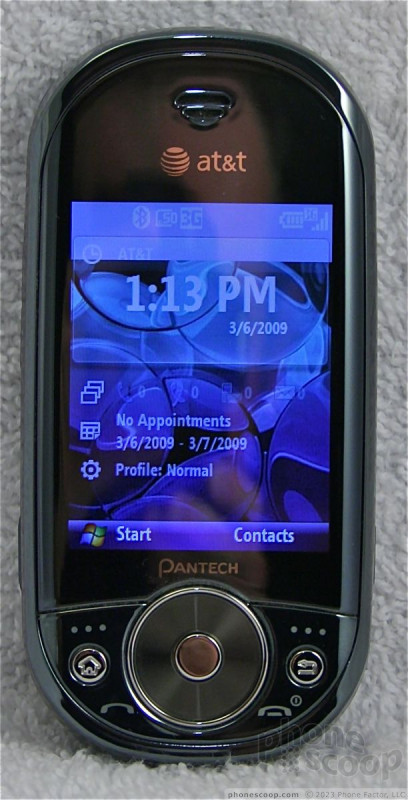








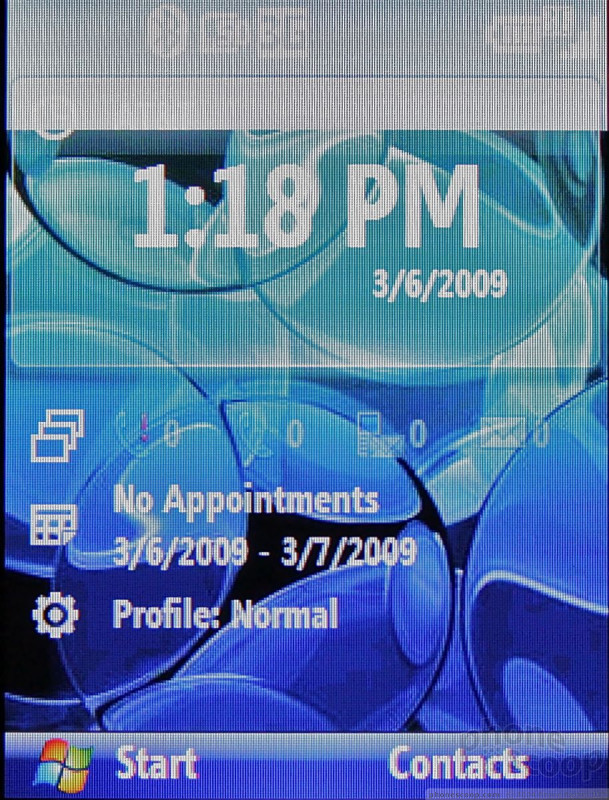





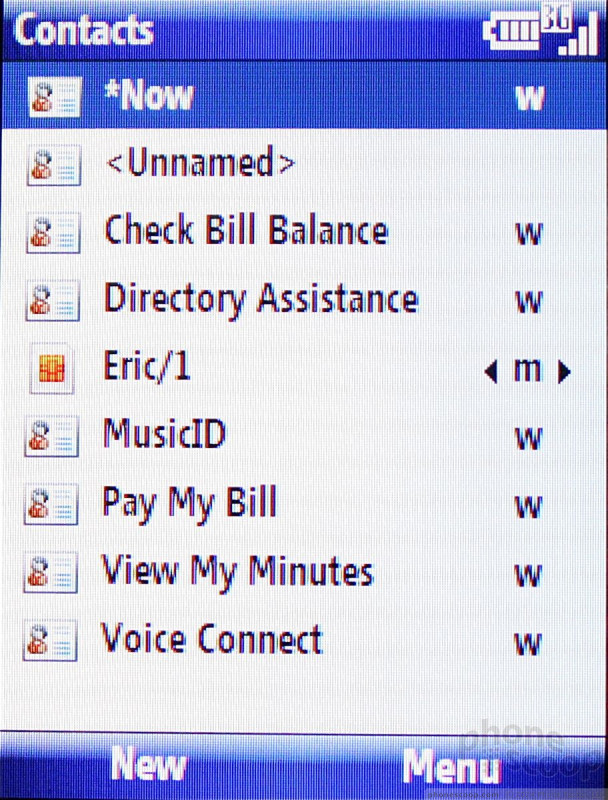




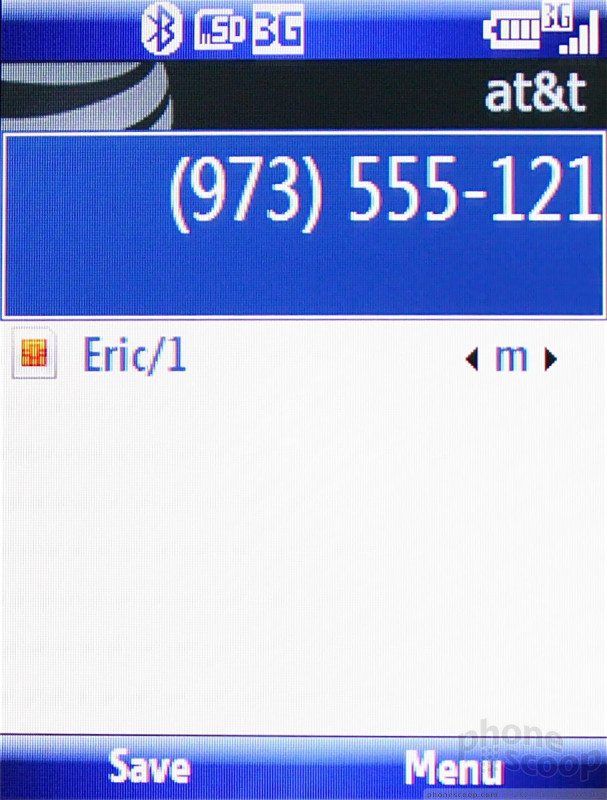


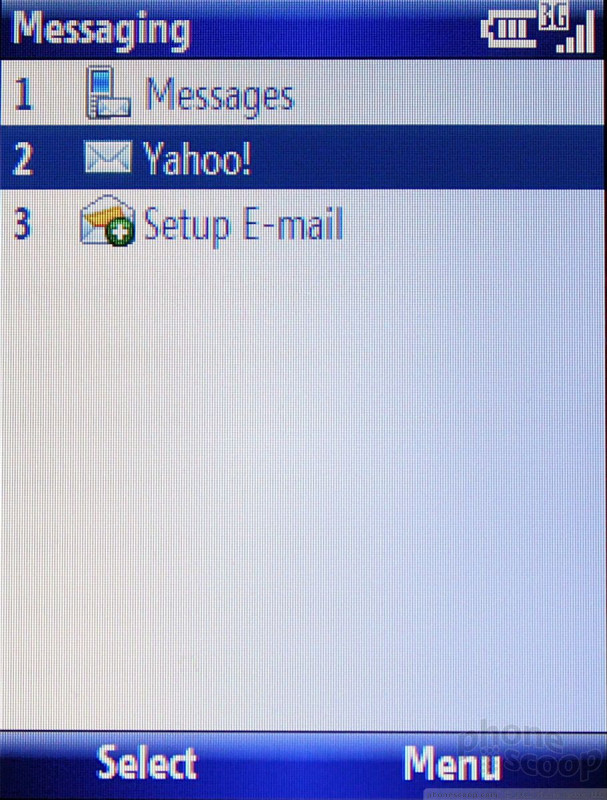






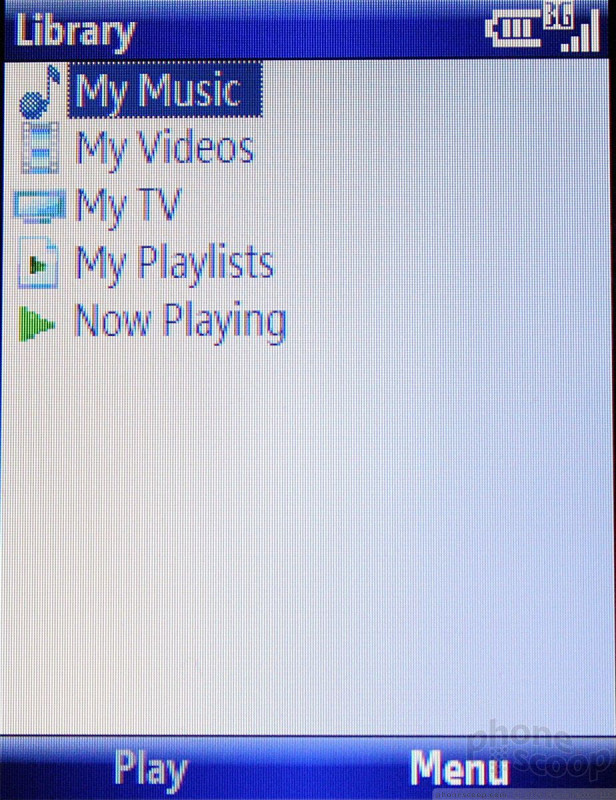














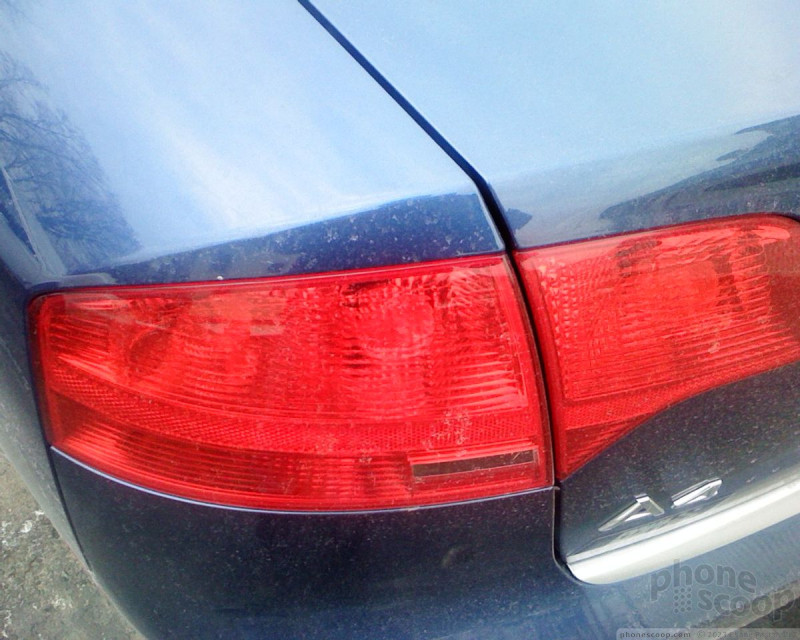












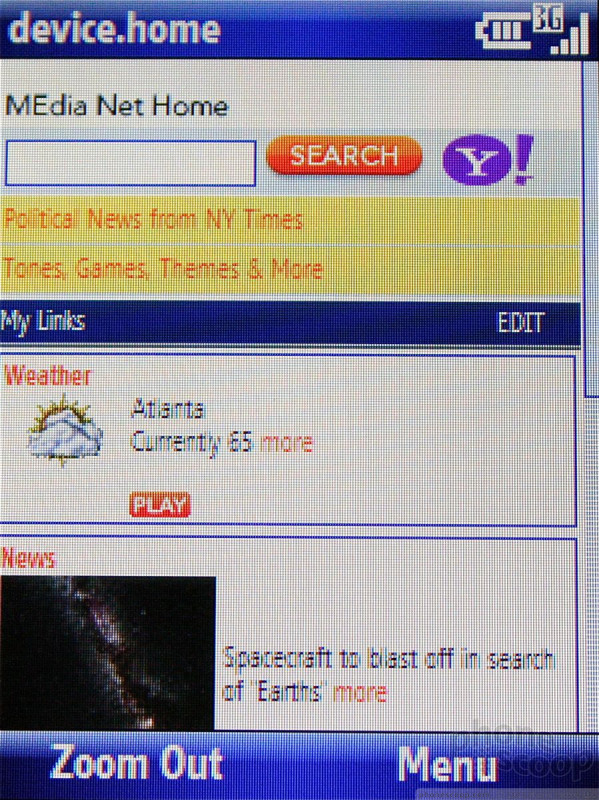





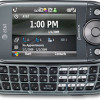 Pantech Announces Matrix Pro
Pantech Announces Matrix Pro
 iPhone 15 Series Goes All-In on USB-C and Dynamic Island
iPhone 15 Series Goes All-In on USB-C and Dynamic Island
 Samsung S24 Series Adds More AI, Updates the Hardware
Samsung S24 Series Adds More AI, Updates the Hardware
 iPhone 16 Brings More Features to All Price Points, Including New Camera Control
iPhone 16 Brings More Features to All Price Points, Including New Camera Control
 OnePlus 11 Pumps up Flagship Specs
OnePlus 11 Pumps up Flagship Specs
 Pantech Matrix Pro C820
Pantech Matrix Pro C820








